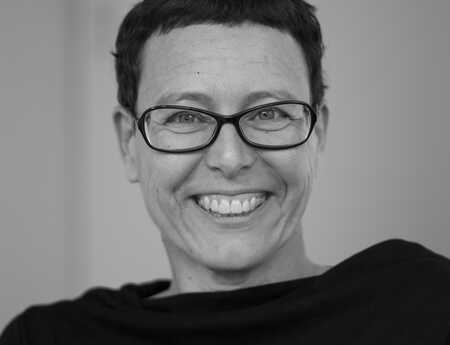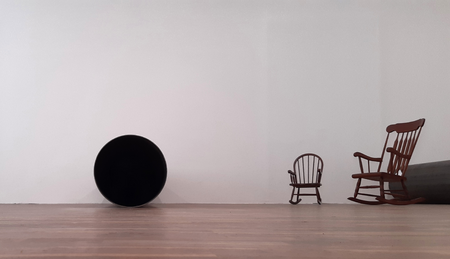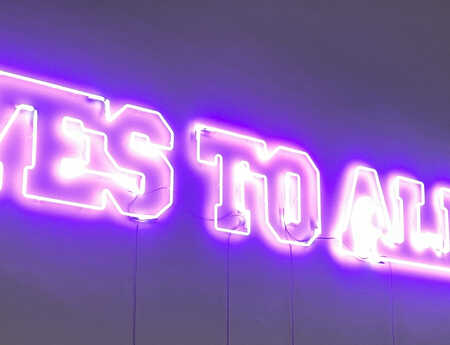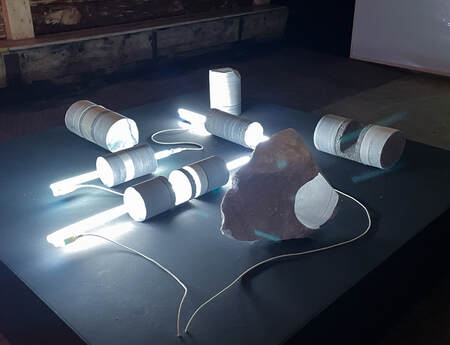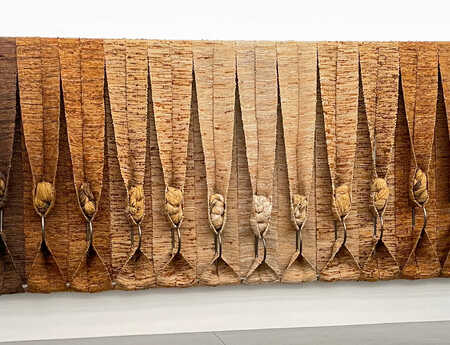Sculpting the Uncertain: Sung Tieu Condenses Global Uncertainty Into the Size of a Fist.
Until November 10, 2024, Without Full Disclosure can be seen and heard at the Museum für Gegenwartskunst in Siegen. This is where Sung Tieu poses important questions to a supposedly modern society. Just as there is no such thing as ‘the one answer’, she does not limit herself to one medium but skillfully guides all threads through one eye.
An overview.
Without Full Disclosure combines older as well as more recent works and works created especially for this exhibition by the 9th Rubens Prize winner of the city of Siegen, Sung Tieu, into an atmospheric overall composition. Sobriety and structure, yet ambiguity and distraction, are sought to be intertwined here as if the ends of two shoelaces.
As is the case with the threads of themes dealt with, Tieu's choice of forms of representation and reproduction is also multifaceted. Flatware, found objects, everyday objects, and pieces of furniture are finely interwoven with projection and sound. In doing so, the artist succeeds in creating minimalist spaces, which in turn grow into independent sculptural structures by means of sound.
Thus, apart from the visual adaptation of the viewer, the ear becomes, very much rather, the means of conveying complex contexts.
While the source of unknown sounds remains uncertain, their effect on us may be all the more intense. This is what Tieu makes use of.
And in any case, she leaves nothing to chance.
The actual completion of her artistic processes is preceded by meticulous research and studies. The materials used as well as their finishing and ultimate presentation are subject to the highest quality standards; each and every element is already effective in itself, in addition to the theoretical background, which in turn is rarely self-explanatory. A closer look is (rightfully) assumed.
In order to set Tieu's works in context, it is worth taking a look at her key biographical data on the one hand and at the thematic complexes that underpin the special exhibition on display in Siegen on the other.
Sung Tieu (*1987 in Hải Dương, Vietnam; lives and works in Berlin) made a name for herself with works that reflect her own experience with migration after the fall of the Berlin Wall.
At the age of five, she followed her father, who was working as a so-called contract worker in the GDR, to the reunified Germany. Against this background, the artist deals with questions of social responsibility and the impact of bureaucratic power structures and social control on the individual. She explores the global interdependence of colonialism and the Cold War.
The focus is on critical infrastructures that decide who and what becomes visible (or rather not).
In Without Full Disclosure, in particular, over 50 works spread across eleven rooms deal with the influence of French colonisation on cultural standards in Vietnam, the use of psychological and acoustic weapons in military operations, and the development of energy infrastructure.
Her current exploration of the risks of hydraulic fracturing (fracking) in the USA and her research into potential shale gas extraction areas in Lower Saxony and North Rhine-Westphalia also play a central role.
We go inside.
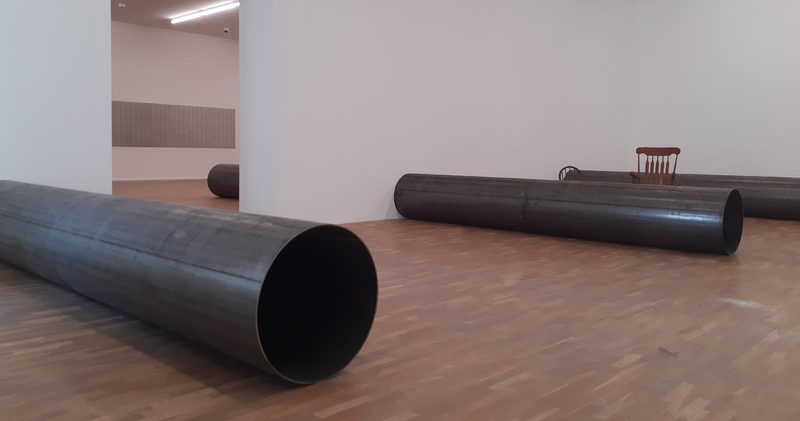
In fact, these sounds usually remain hidden. This is because these sounds were extracted from the soil of various fracking areas in Pennsylvania and West Virginia (US) using a contact microphone.
Sequences taken from this are played through six loudspeakers mounted inside the pipes, using them as resonating bodies, before the three different sound loops converge in the room, and the room – no, ultimately the entire museum – functions as a ‘resonating resonating body’.
What is yet to come is also heralded acoustically. We can hear a high-frequency hissing, ticking, an almost chirping sound. And every now and then, the low, elongated sound of a bell.
The unpleasant, penetrating ‘chirping’ emanates from an unobtrusive wall installation. Presented in a hallway, at first glance it might be mistaken for a plain piece of furnishing, but this is actually the work Protective Cover (Headache). A radiator cover made of steel blends inconspicuously into the functional spatial structure, but its inside has a lot to offer.
A loudspeaker concealed inside emits the aforementioned frequencies and alludes to the so-called Havana syndrome, which we will explore in more detail later on in the tour.
But until then, our auditory system leads us on to the next room.
A video projection in black and white, a bench opposite in pure white, says the eye, which we do not wish to neglect at this point.
On display are images of a forest in Bạch Mã, central Vietnam. A forest that was once destroyed by the use of Agent Orange and Napalm. Very few were allowed to survive, but the forest did, as did Western beauty ideals of light-coloured, ‘flawless’ skin.

Colonisation, imperialism, claiming something as one's own, are draped over this exhibition like a semi-transparent cloth, an intrusive, unobtrusive background noise. Yes: art can, may, and must be political.
What we are looking at (and listening to) here is the work Beauty Standards. Footage of the forest in question is juxtaposed with the documentation of a procedure that aims to ‘lighten’ a person's skin. For this purpose, a concoction of various chemicals (ingredients unknown) – only available on the black market – is applied to the skin. Just like after a severe sunburn, the top (‘darker’) layer of skin then peels off, revealing the underlying (‘lighter’) layer.
This may also reveal to us the origin of the chiming bell mentioned above.
We keep following the sounds, and we find ourselves in an elongated room. A high-pitched beeping, a swelling droning, the penetrating voice of an American female newsreader.
Large-format screens on the walls depict acoustic warfare, ideologies, and frontiers in a lurid private broadcaster style.
At its centre: the phenomenon known as ‘Havana Syndrome’ which first occurred in Havana, Cuba, in 2016. As a result of a suddenly occurring sound event, some of the staff at the US embassy in Havana and slightly later at the Canadian embassy in Havana complained of severe physical and psychological symptoms, such as headaches, dizziness, insomnia, and impaired memory.
Several more cases have become known worldwide since then. According to the US intelligence services, 1,500 of these had been investigated by January 2022. The first cases may have occurred at the US consulate in Frankfurt on the Main as early as 2014. There was no clarification, neither of the facts nor the cause; the investigations were closed.
We are able to experience a reconstruction of the ‘sudden sound event’ in this room.
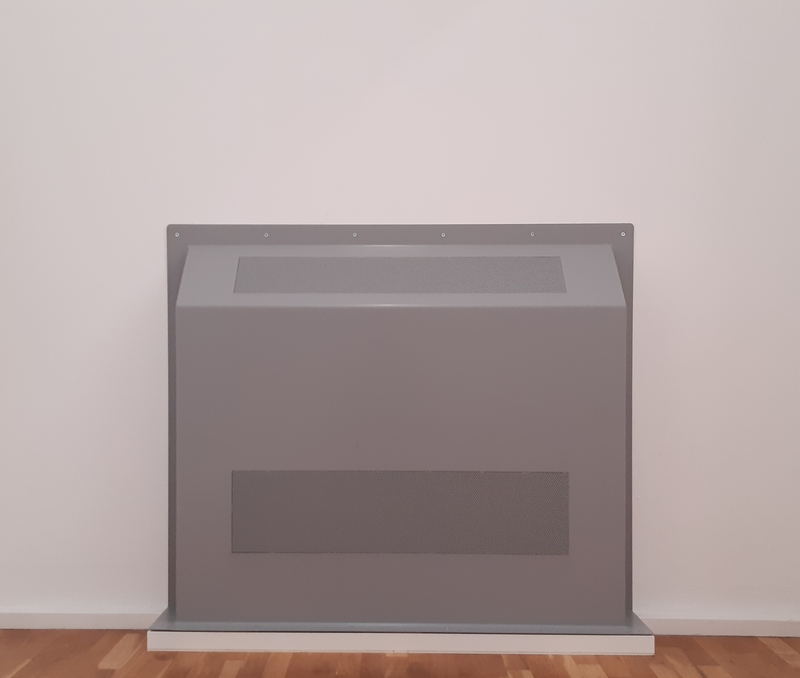
The work Protective Cover (Tinnitus) exposes us to the distorted ‘whining’ mentioned above. Visually identical to the first, the second radiator cover complements the previous one by coming across as even more unpleasant in terms of sound. High-pitched sounds, spiralling into higher and even higher frequencies, inevitably impose themselves on us here, ranging from rushing to clanking.
In terms of subject matter, we will stick to psychological (in the form of acoustic) warfare and finish by sitting on the bench that we carelessly passed by in the course of this article.
Distorted voices emerge, while a monochrome, negative-inverted video projection (No Gods, No Masters) mainly shows Tieu and her family seeking contact with a deceased ancestor via a traditional séance sitting.
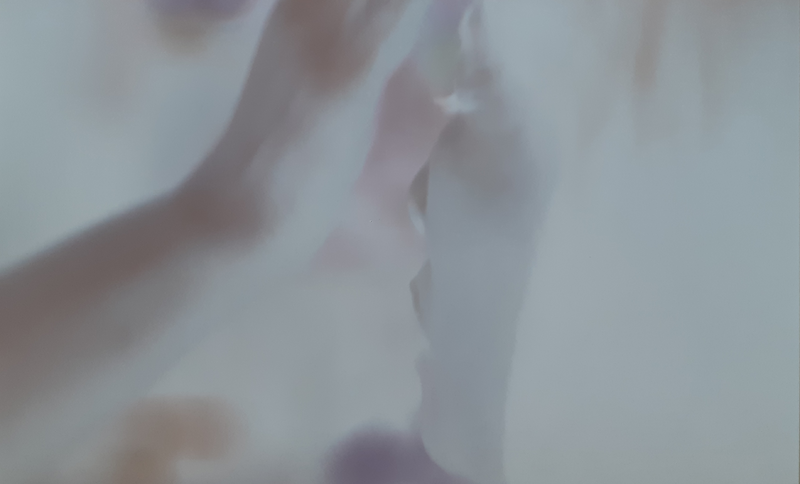
What we see mirrors spirituality; what we hear picks up on the ‘ghost tape no. 10’, which those very same people wanted to use militarily as a weak point of the enemy, not just a supposed, but an actual ‘sonic weapon’.
During the Vietnam War, the infamous tape was played from helicopters of the US Forces to demoralise enemy units. It featured traditional Buddhist funeral music and distorted voices urging their fellow travellers to give up rather than end up as wandering souls like themselves.
The tradition cultivated by the Vietnamese population of bringing their deceased back to their home town in order to prevent their souls from wandering around aimlessly was deliberately used as a negative trigger.
We are heading out.
Anyone who has gained an interest in Sung Tieu's work from this brief (yes!) preview is cordially invited to experience her work in detail.
Without Full Disclosure is the perfect opportunity for this, but it will certainly not be the last.
What we are experiencing here is an aggregation of uncertain realities combined with personal perceptions, synthesised into an artifice. In Tieu's fist, things come together that tend to take place in obscurity and blur between the real and the distracting.
The article was written by Sebastian Kirschner in German.


